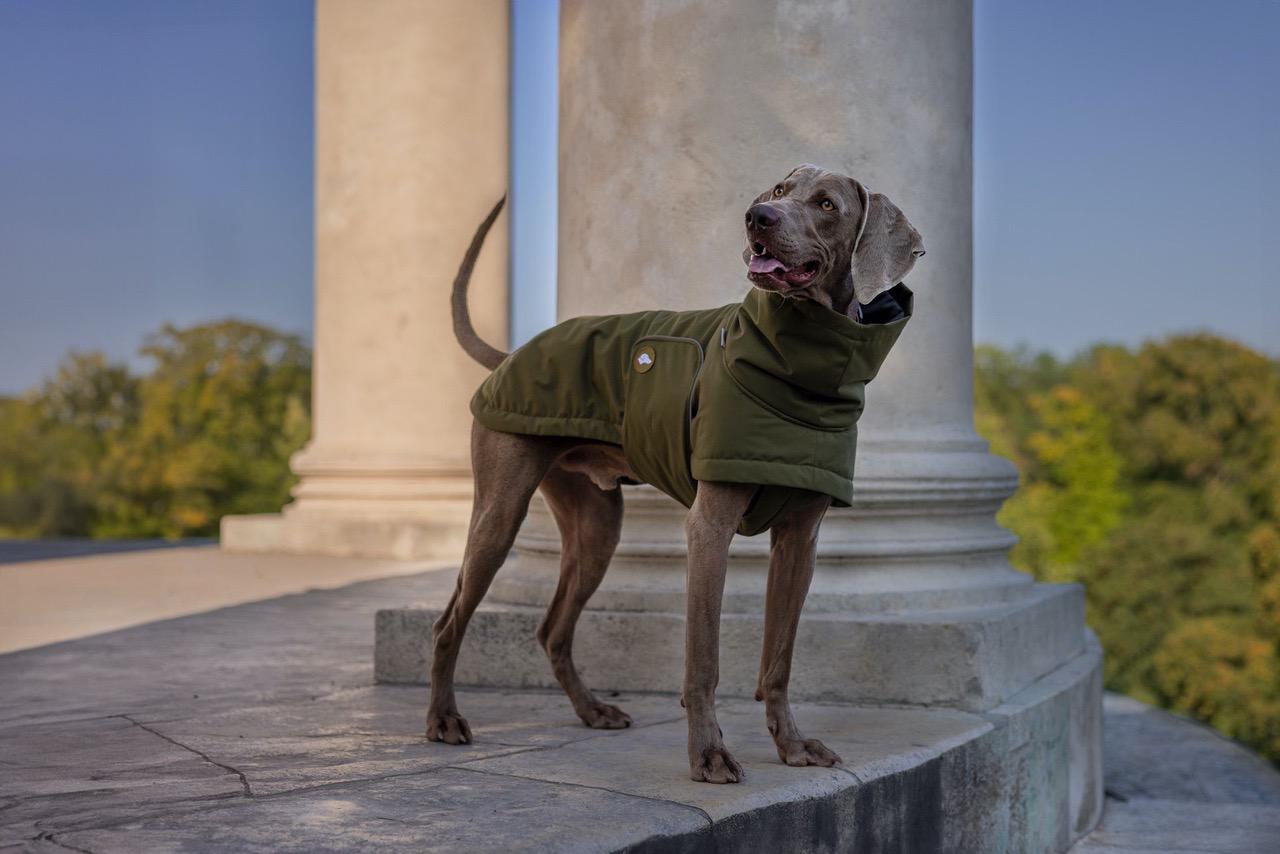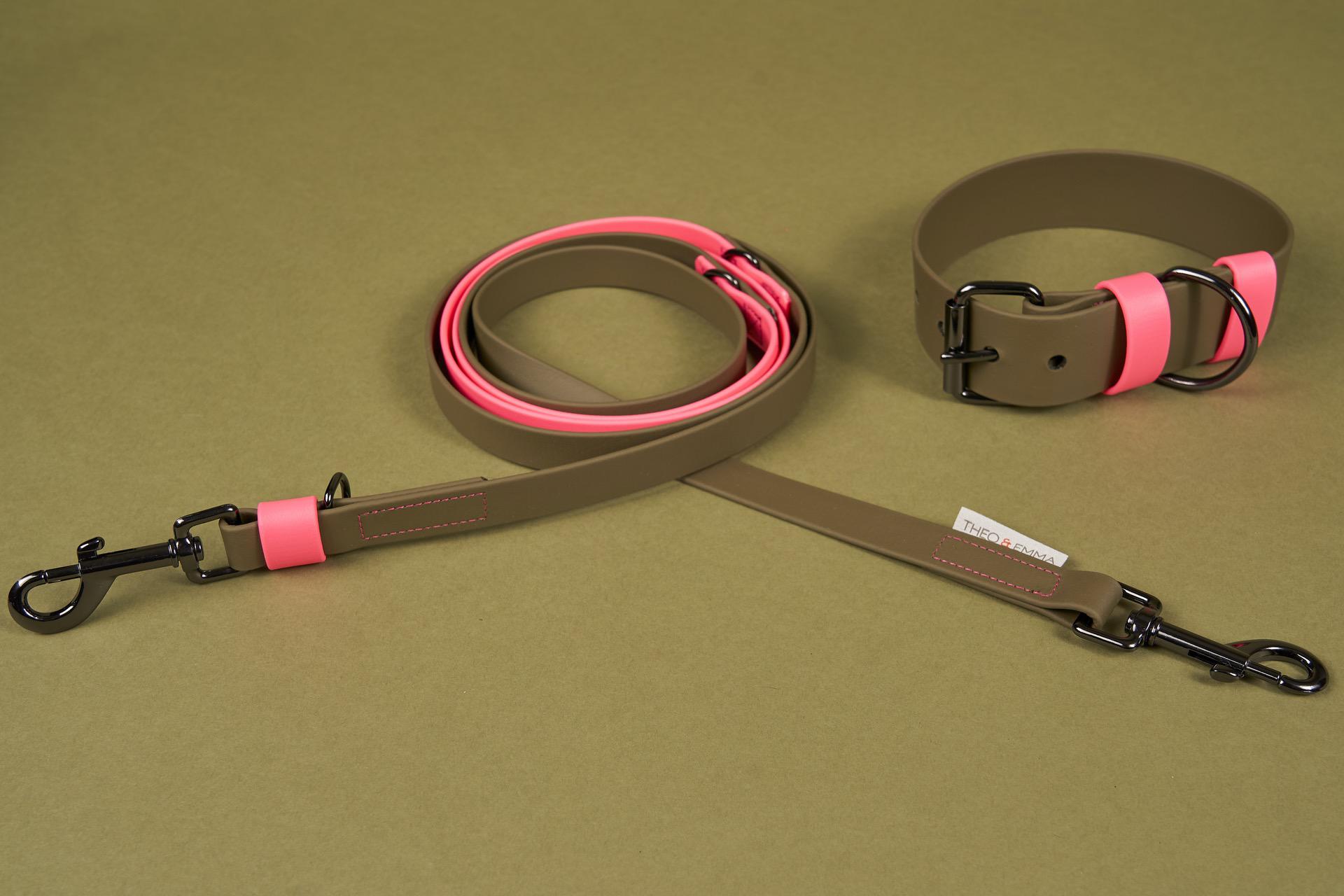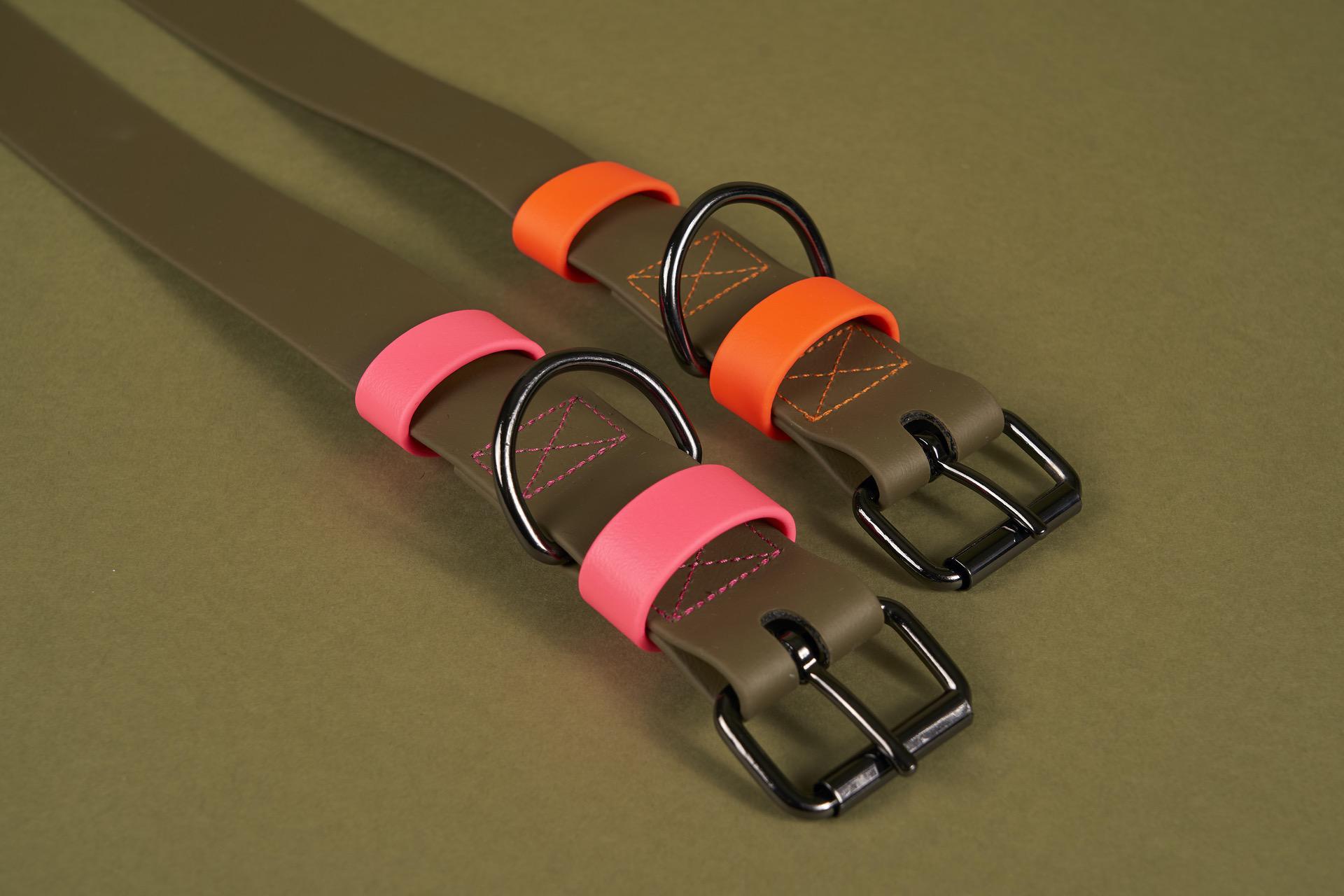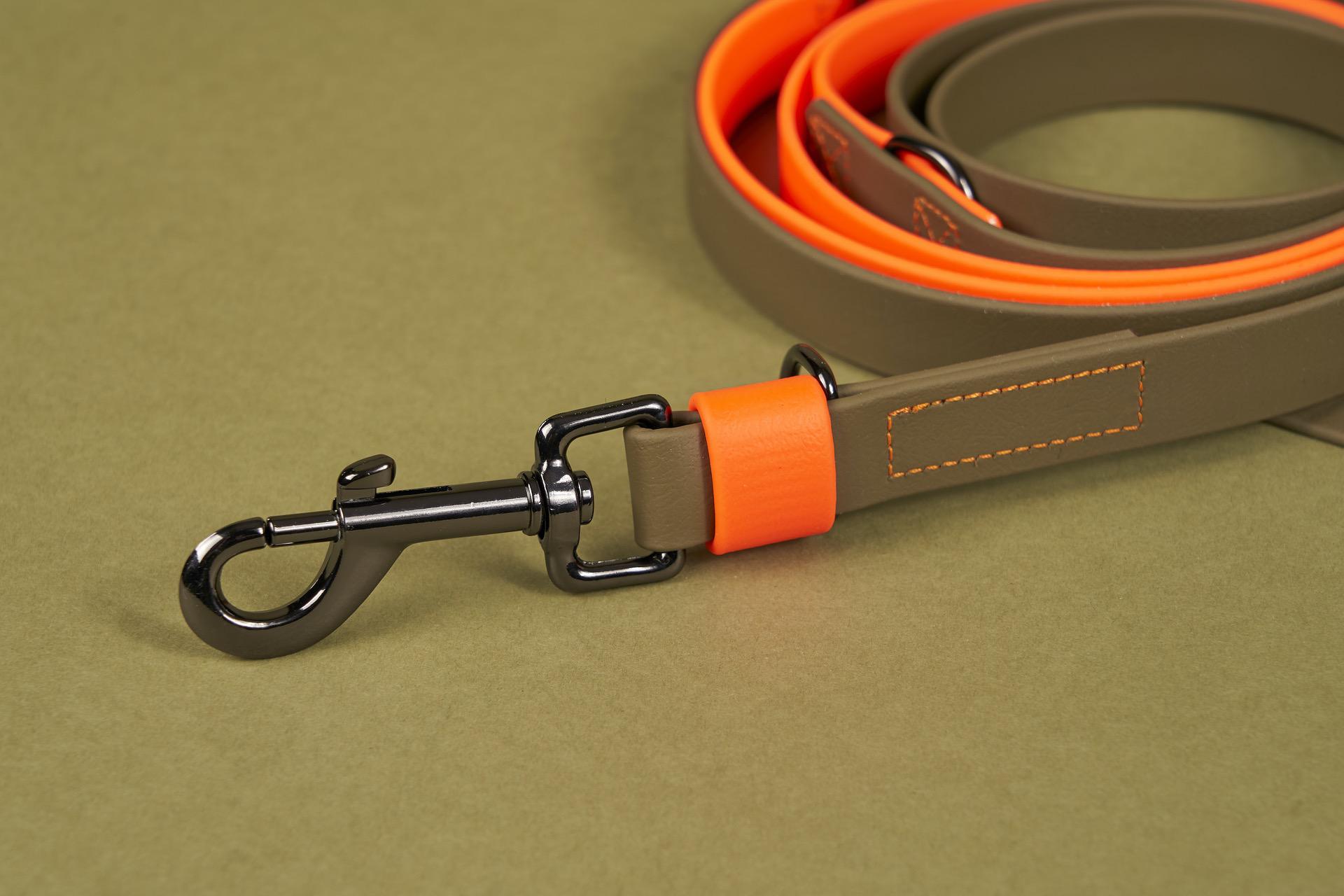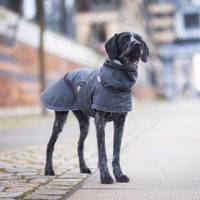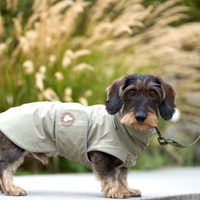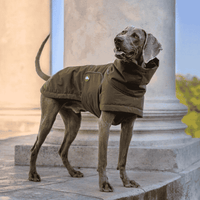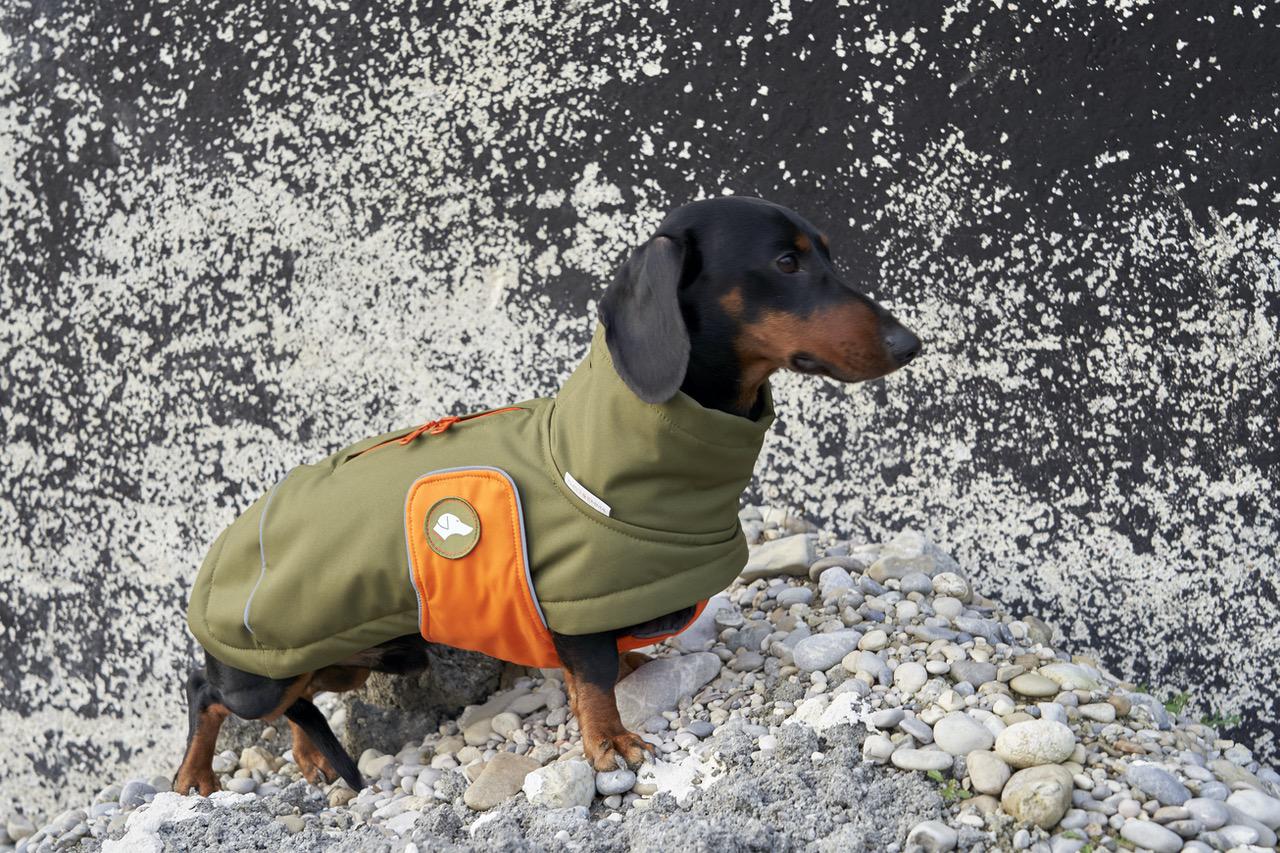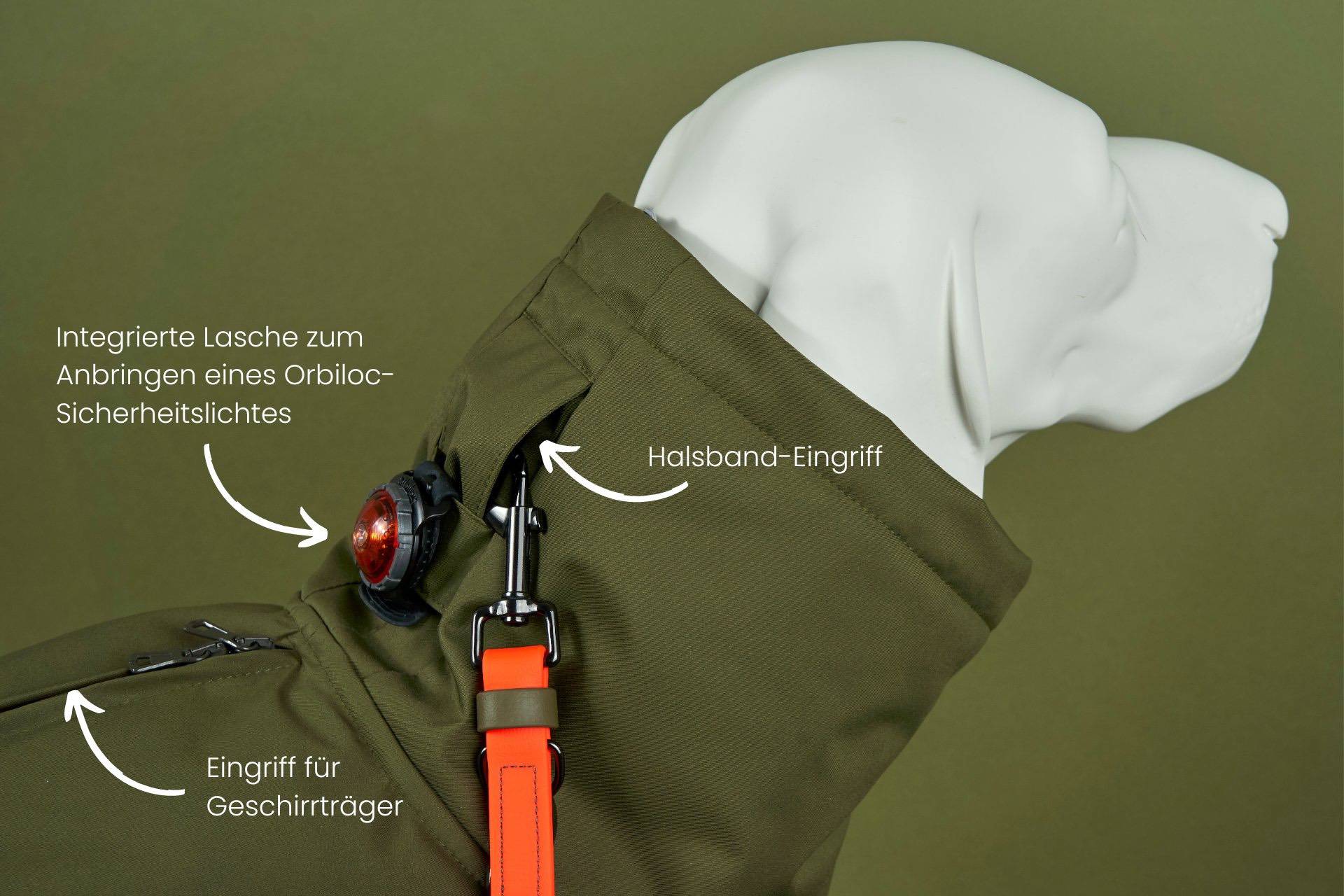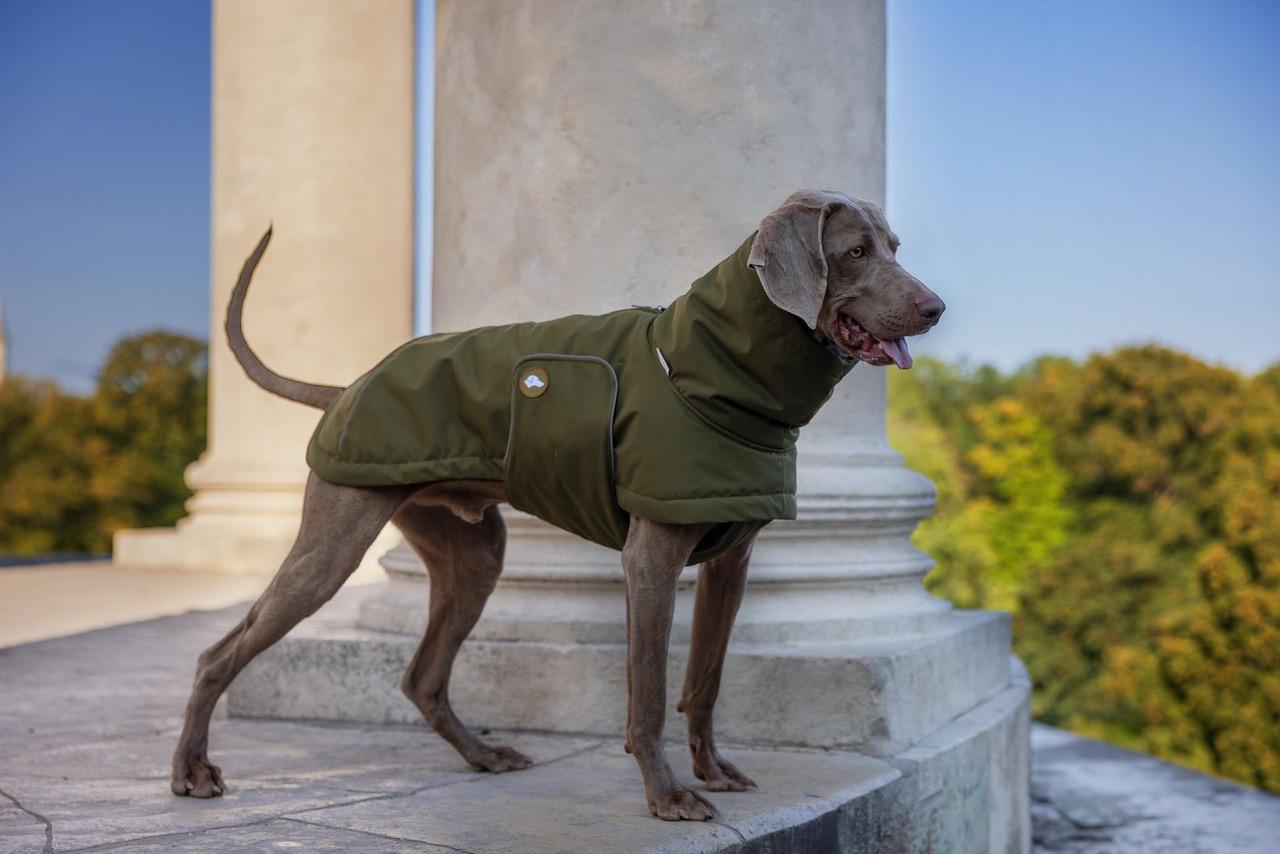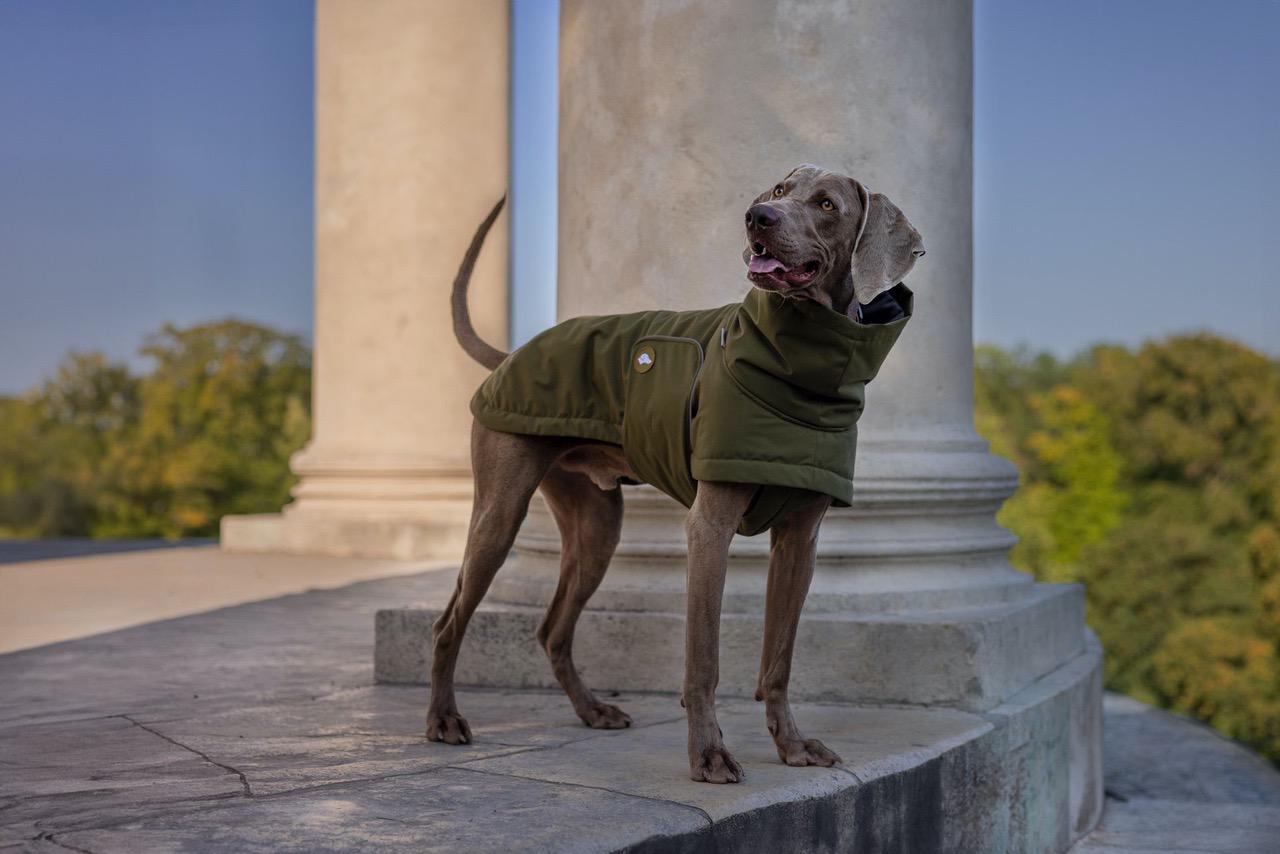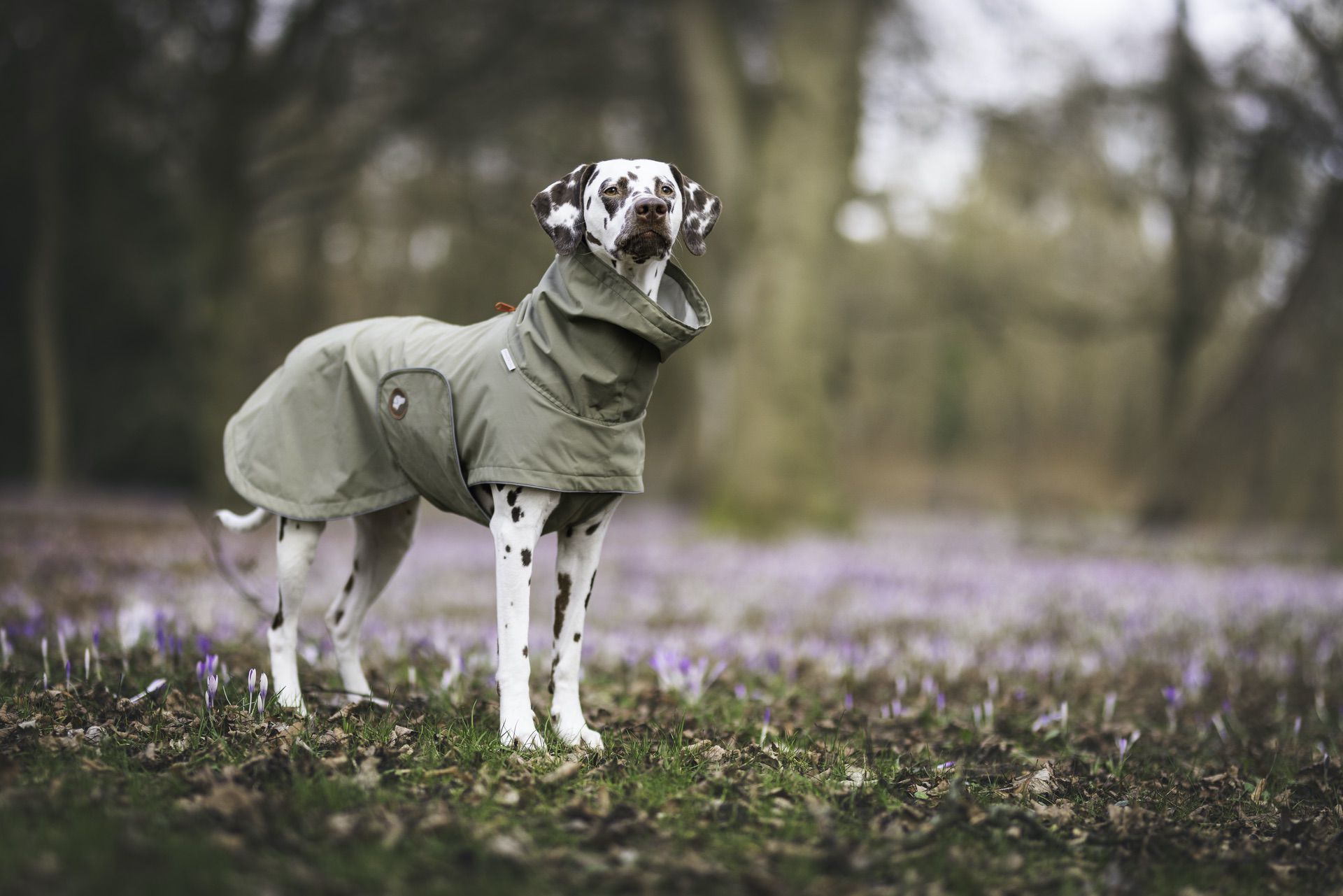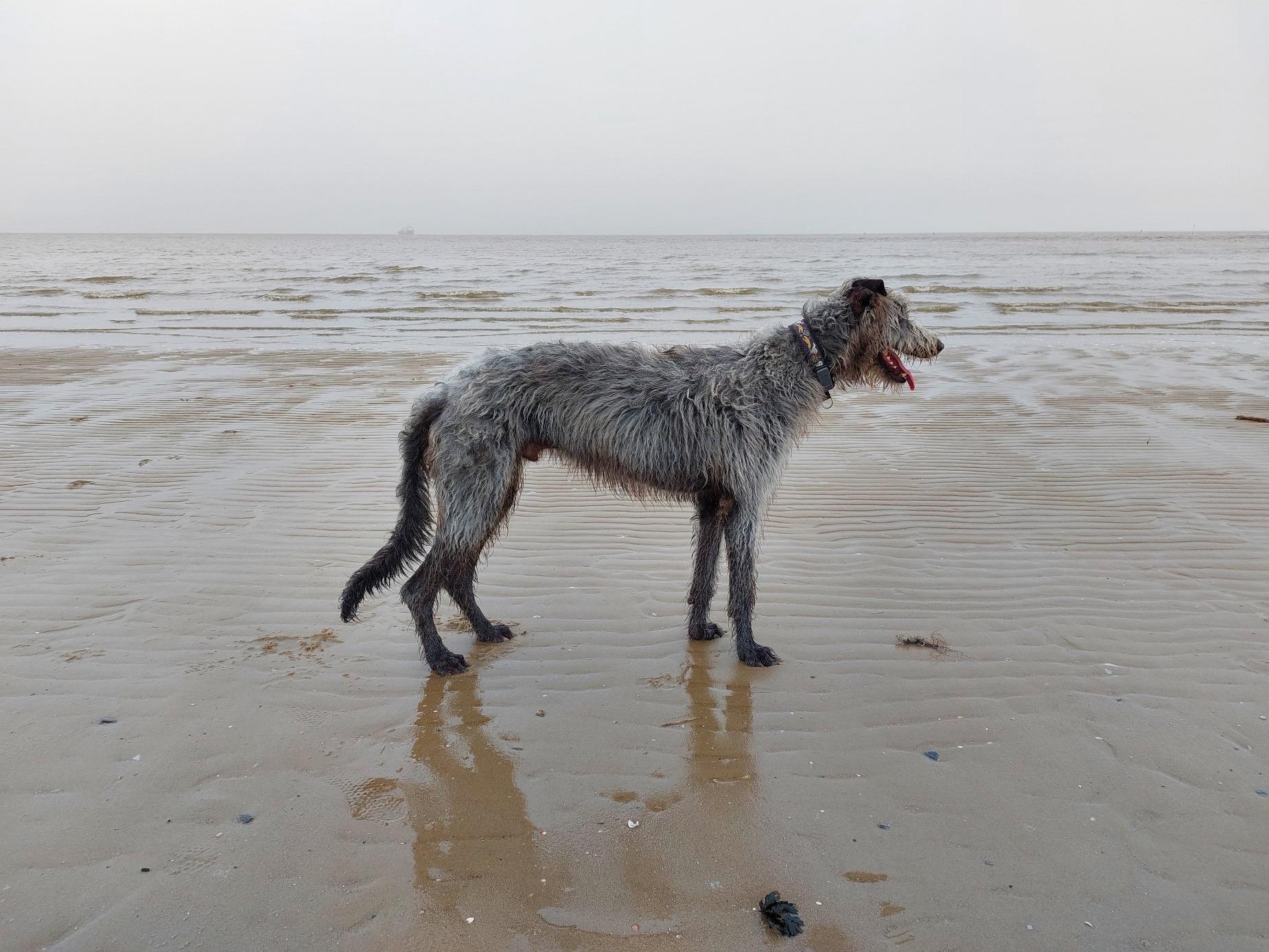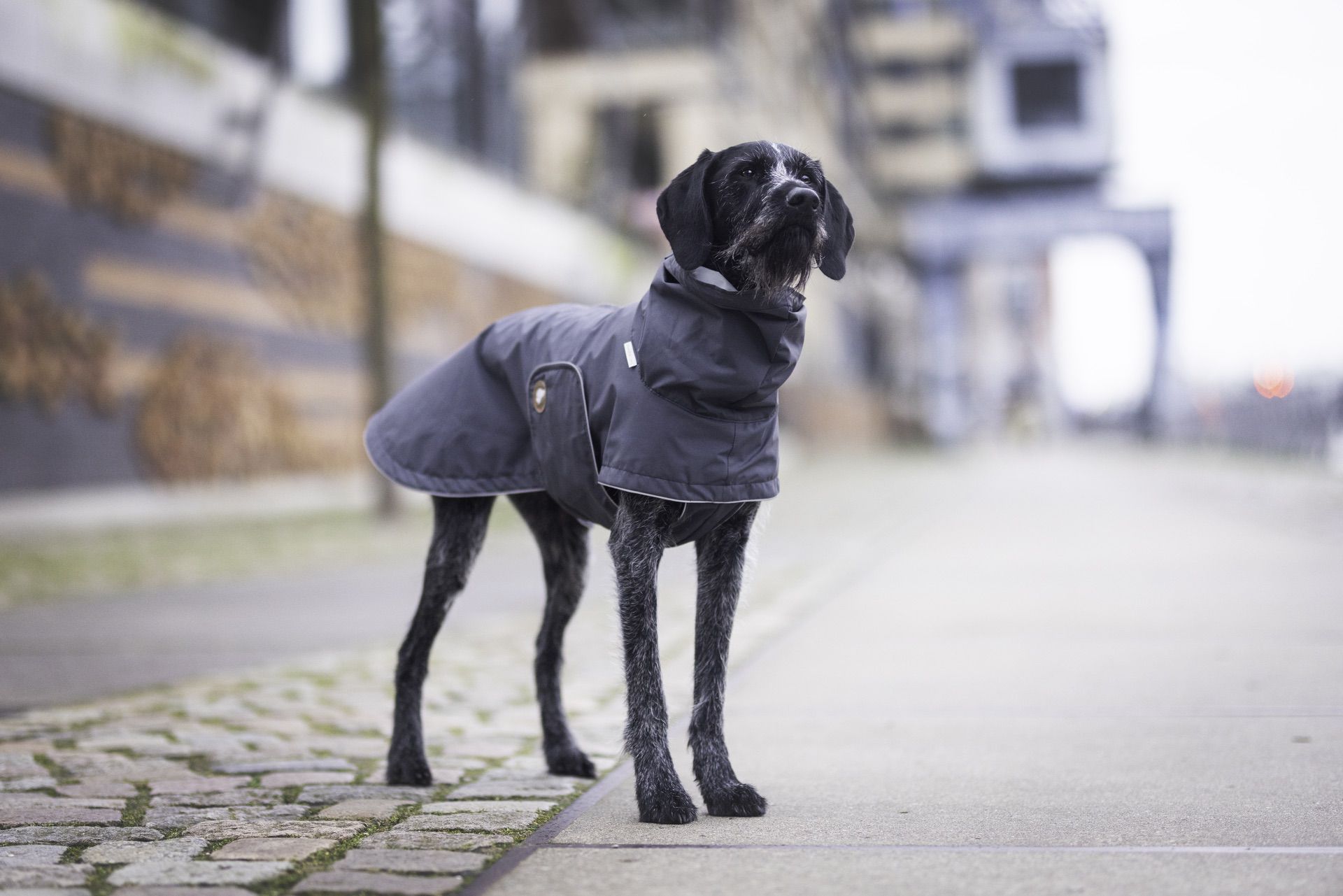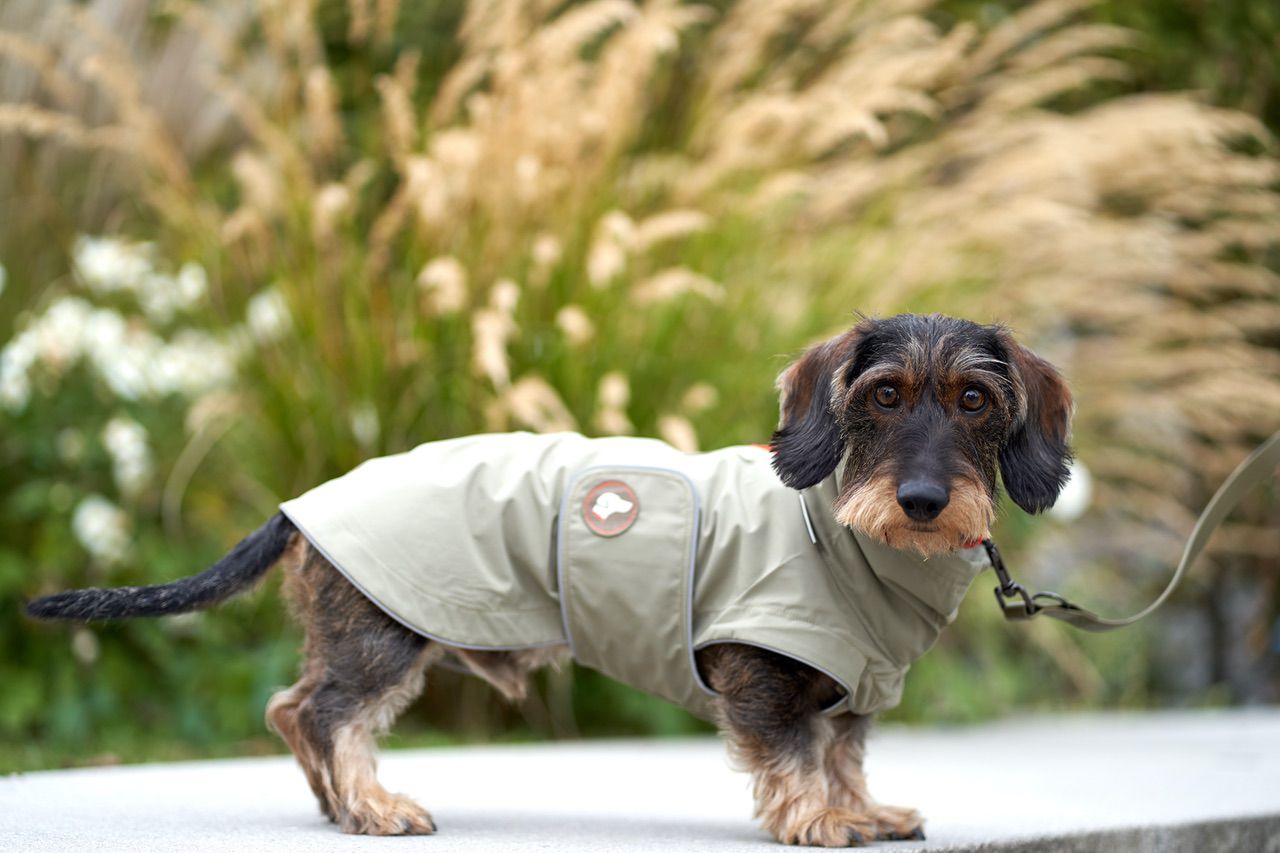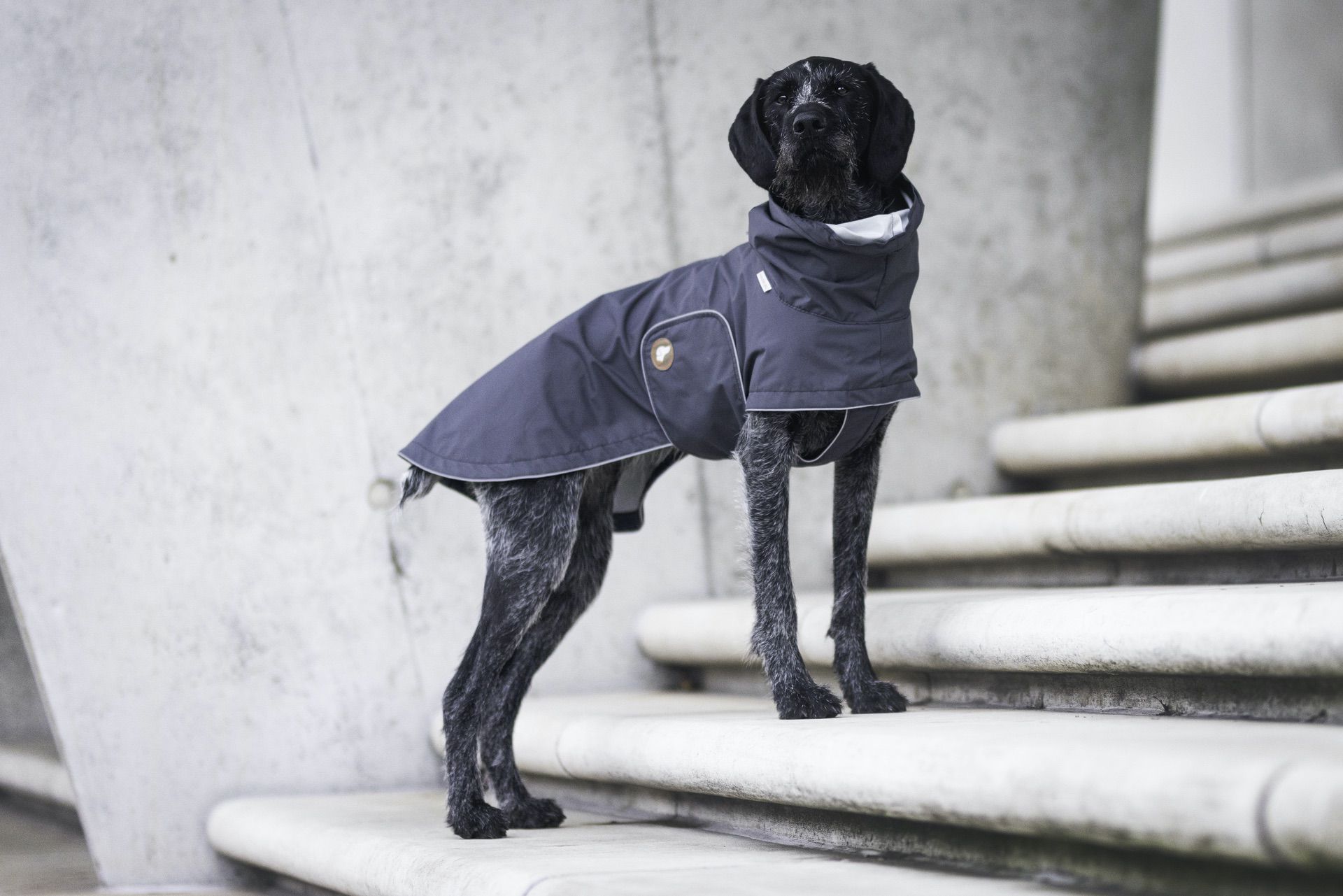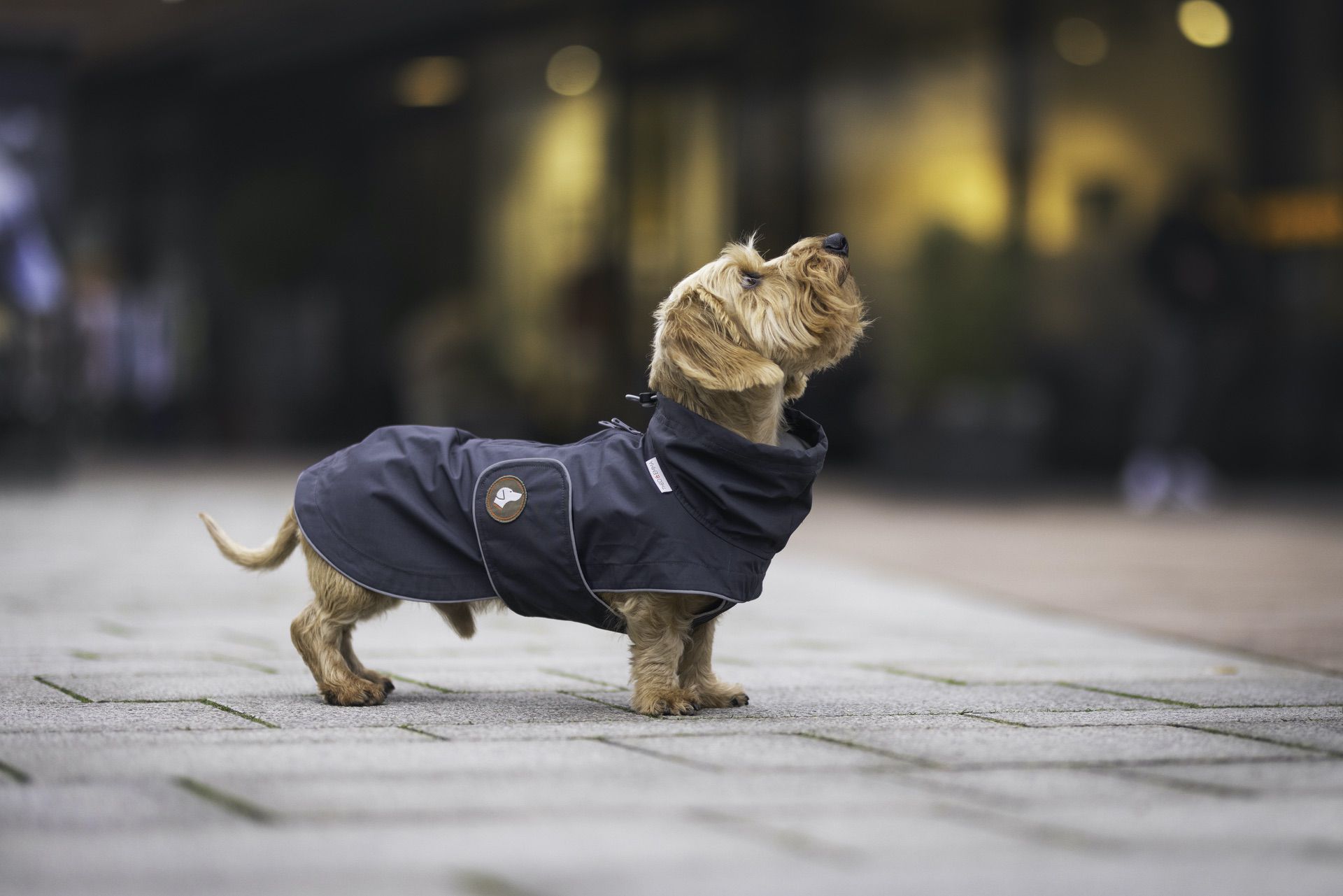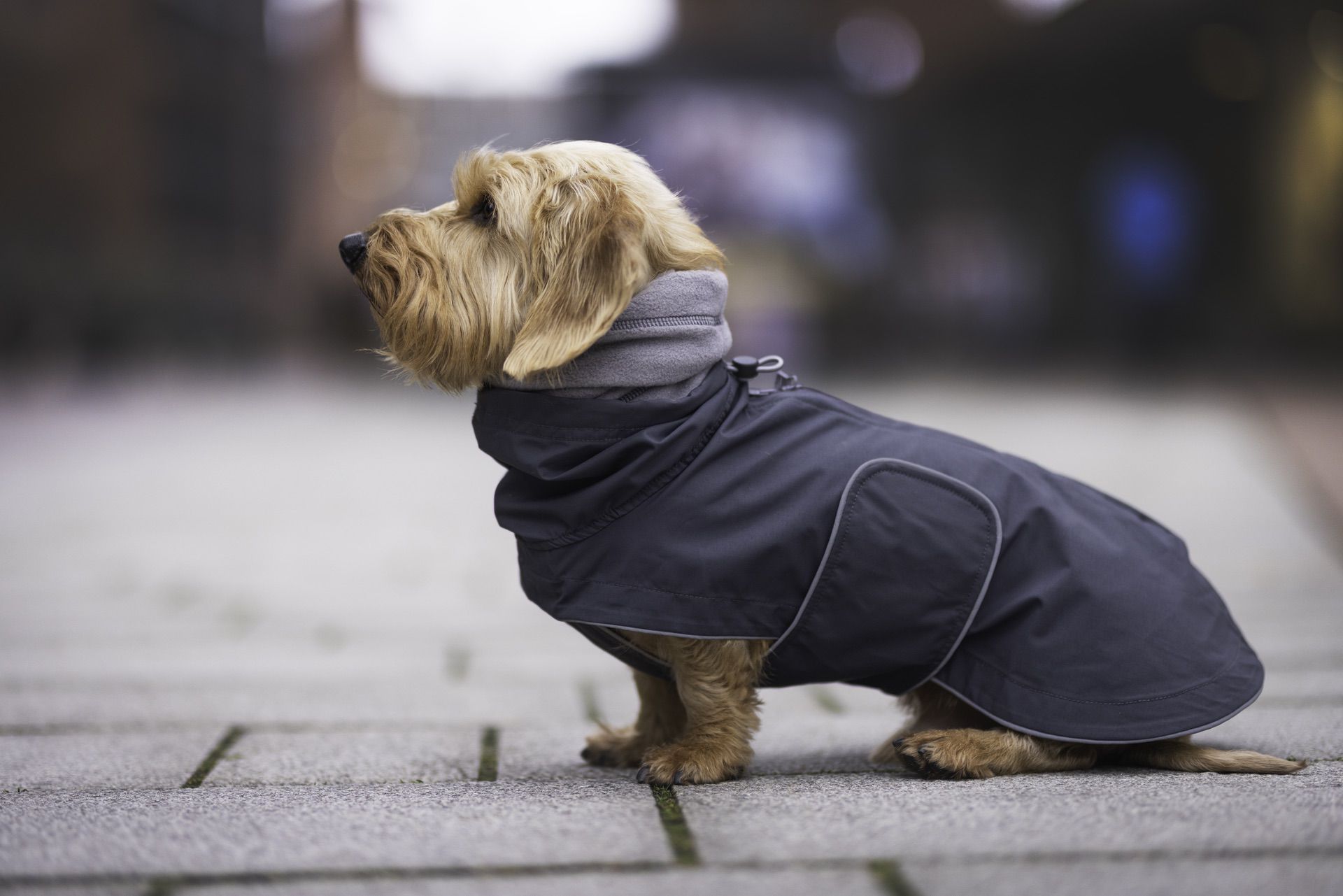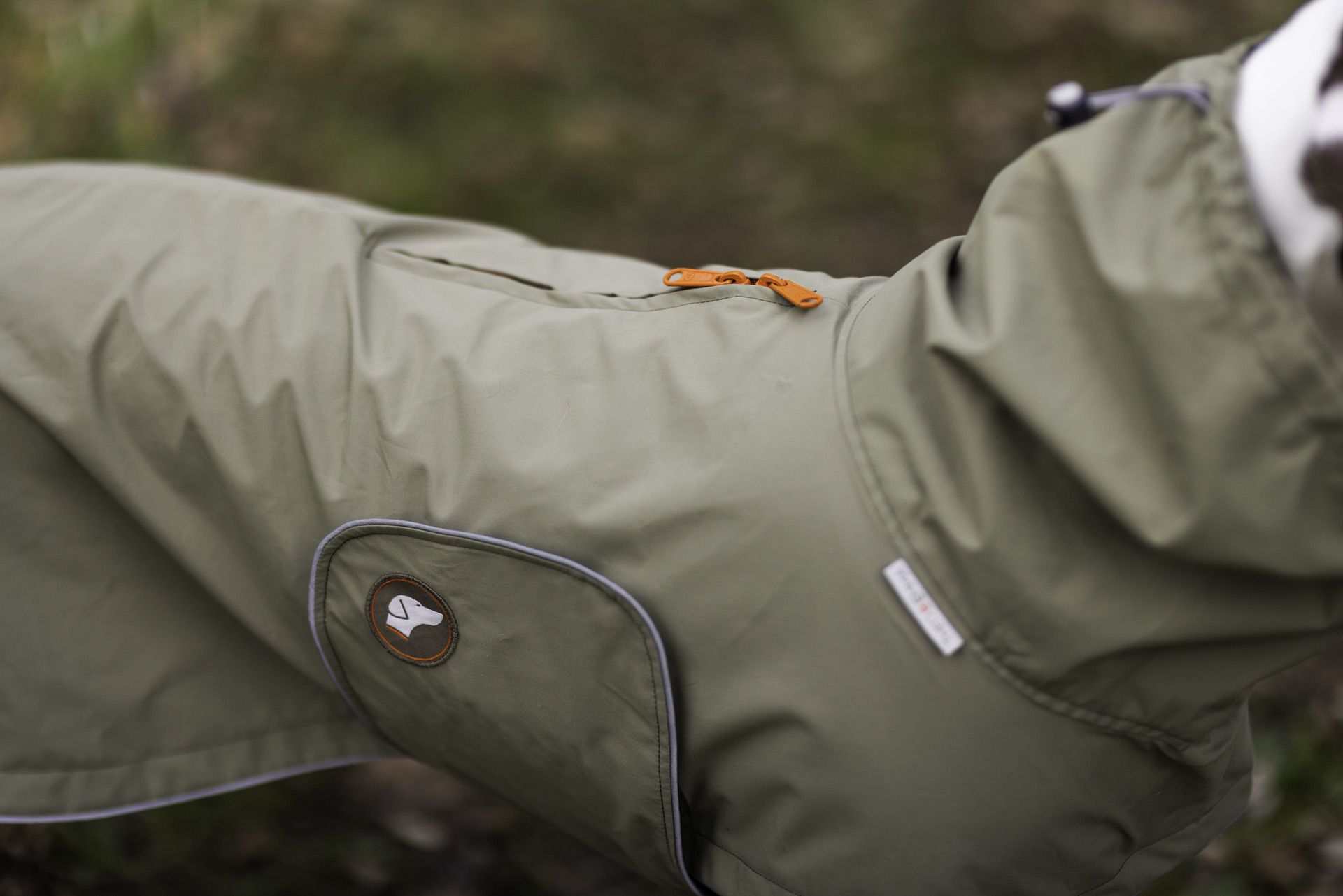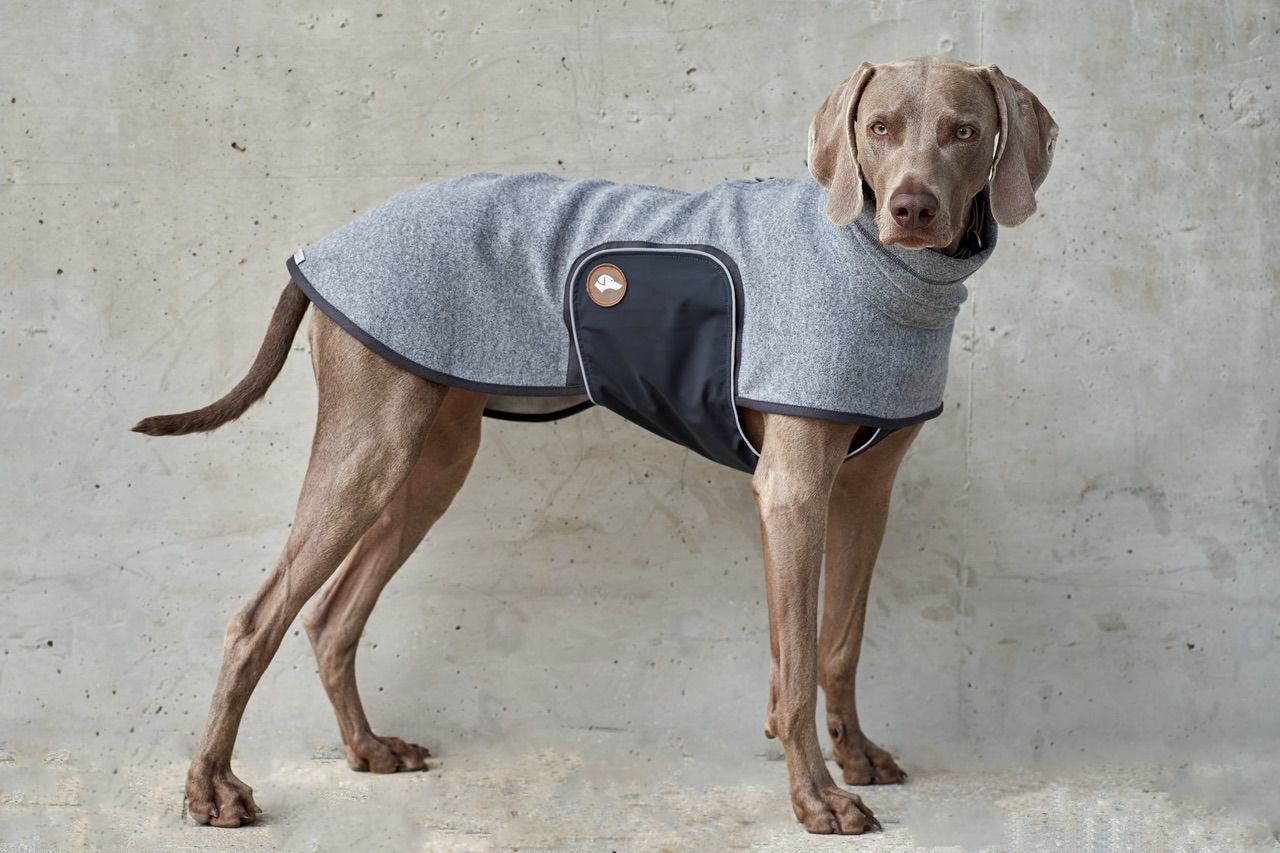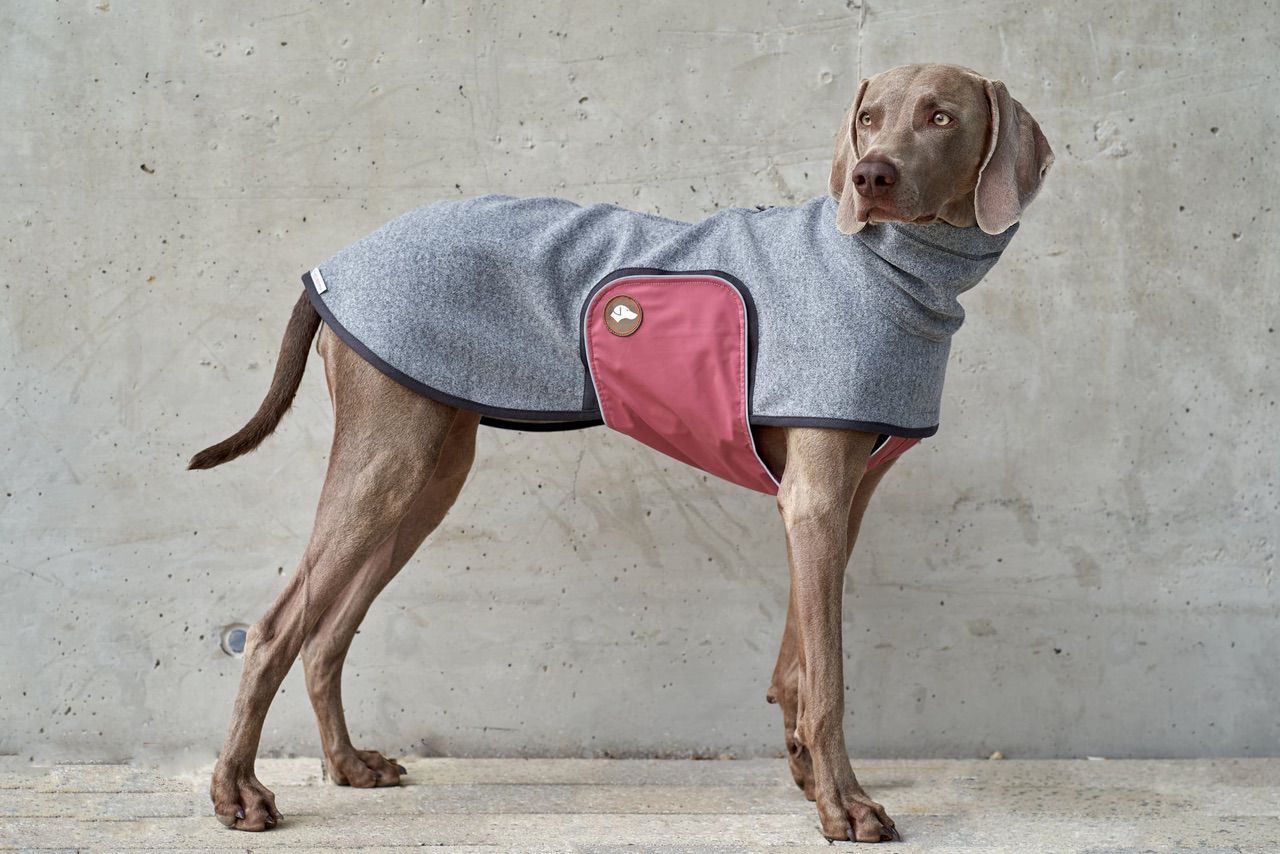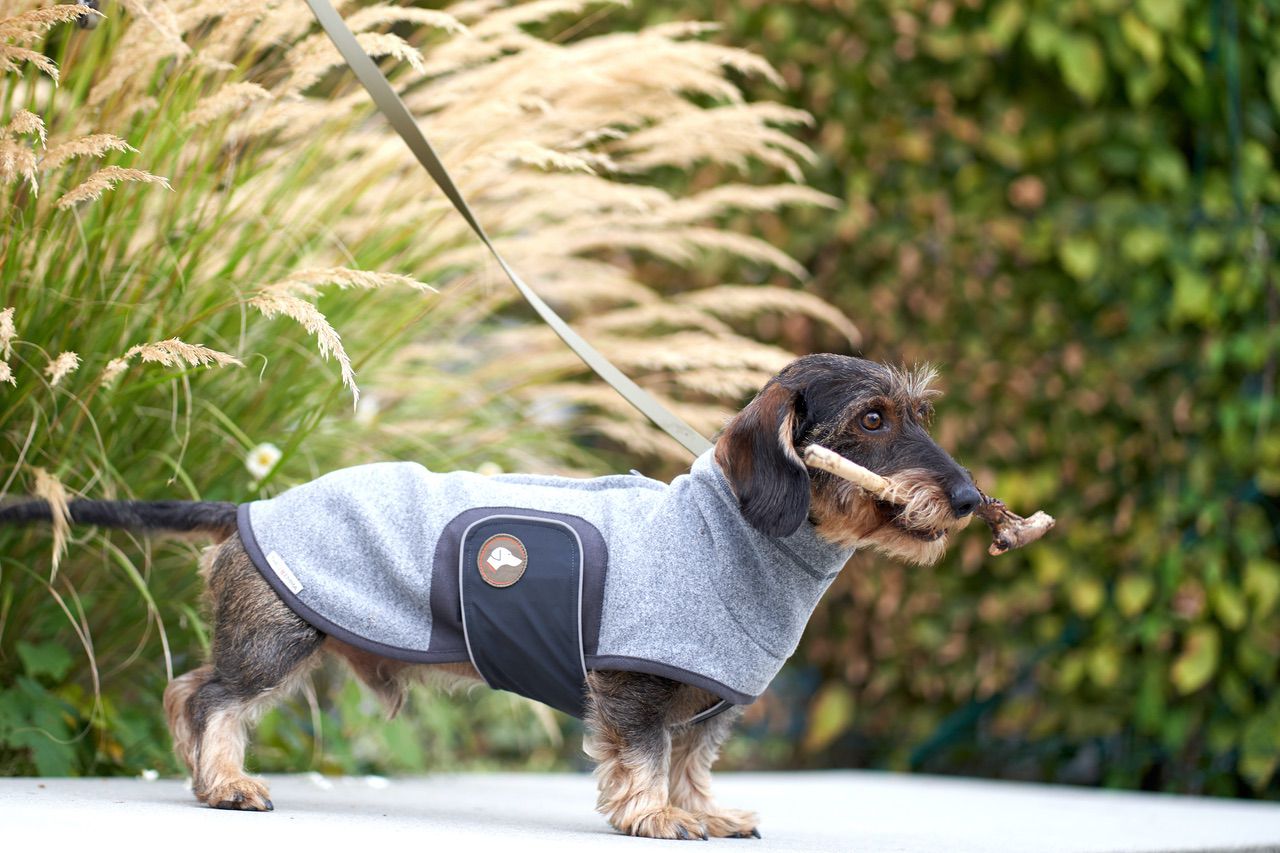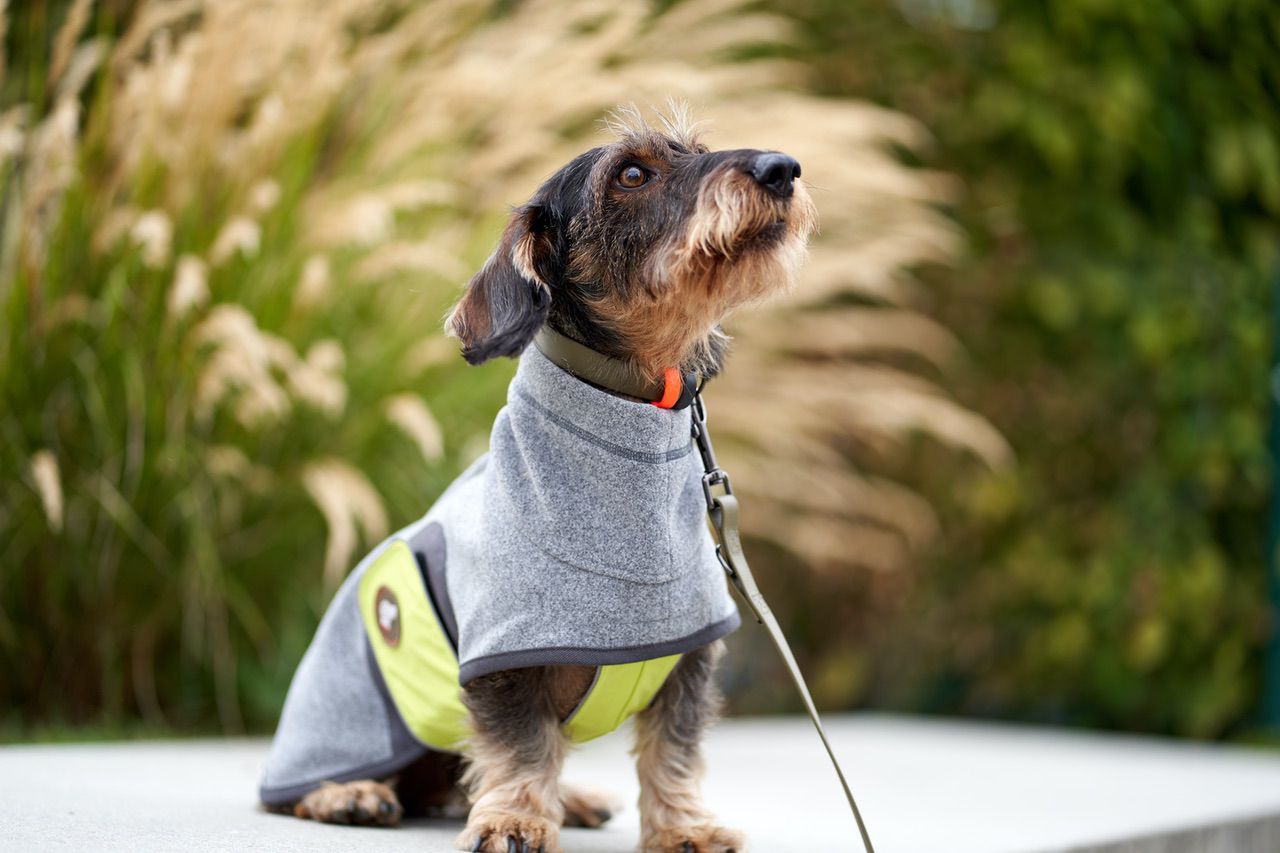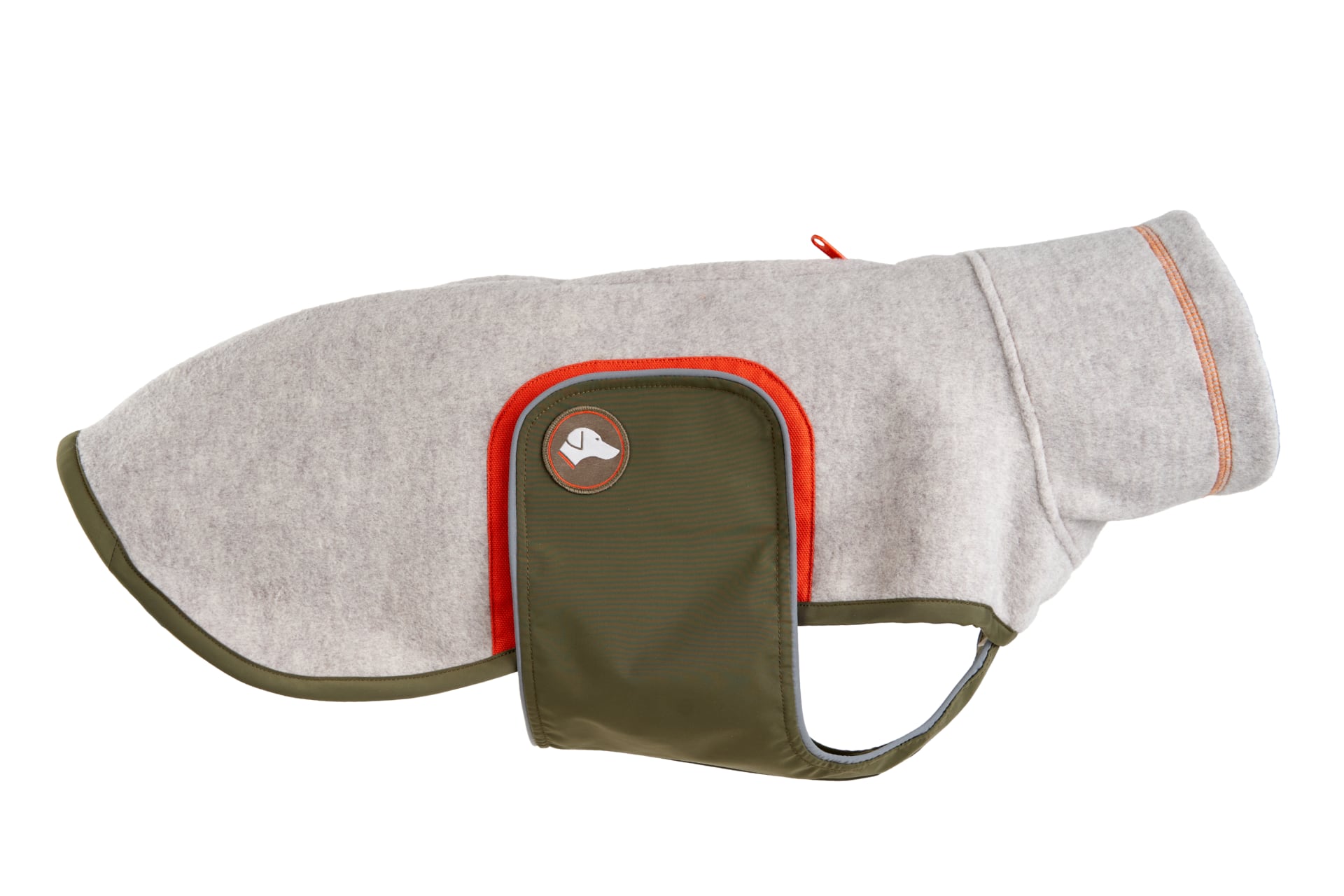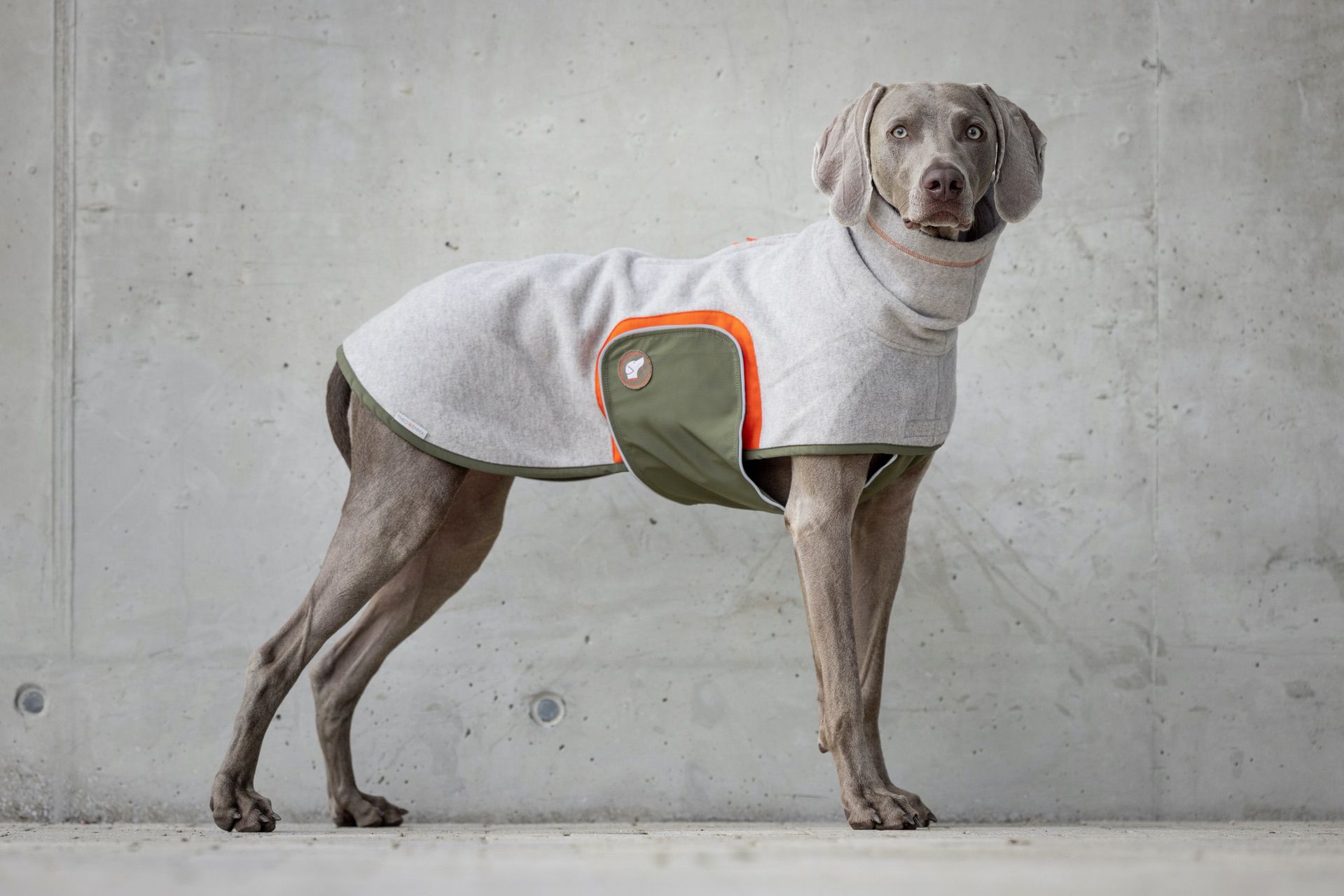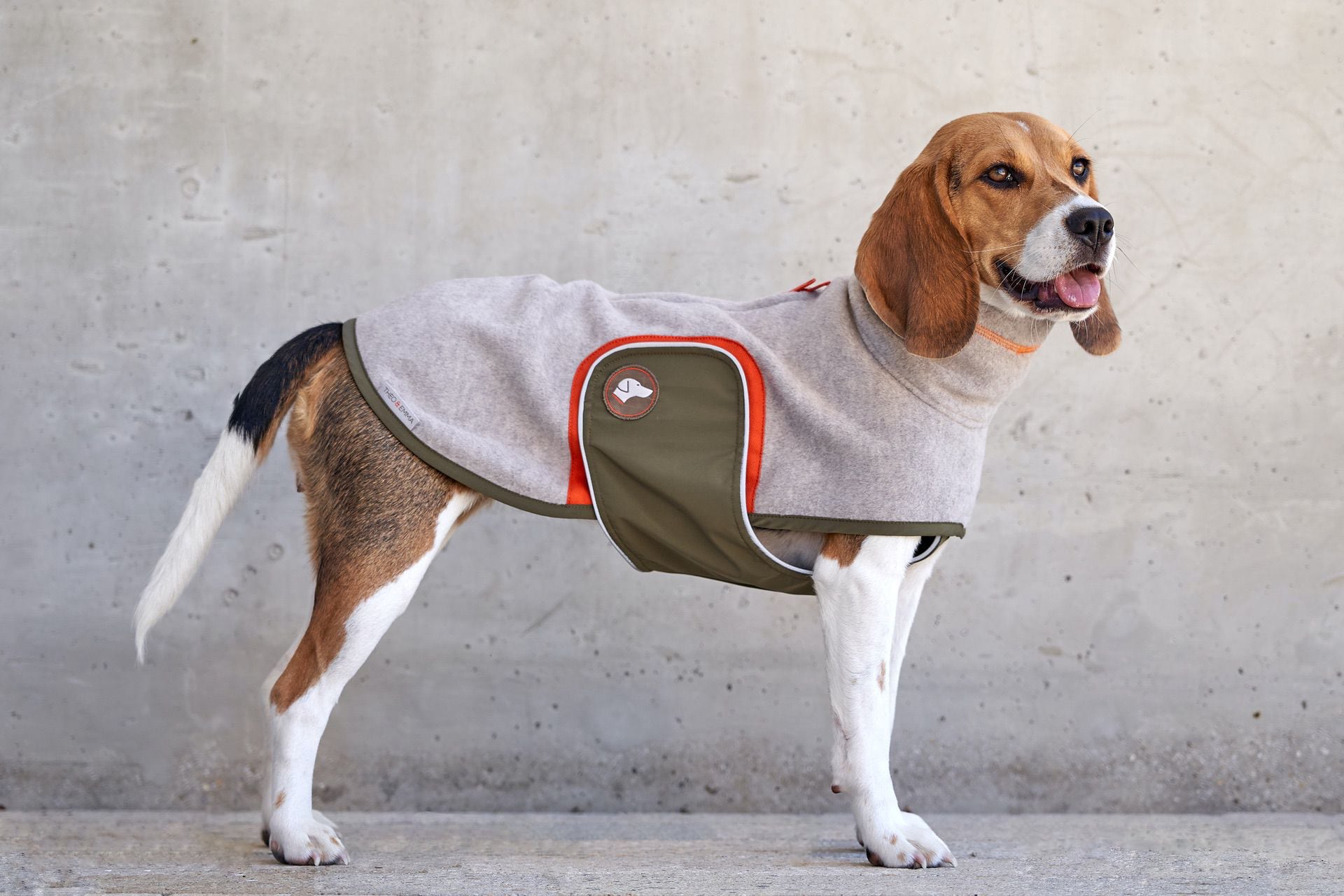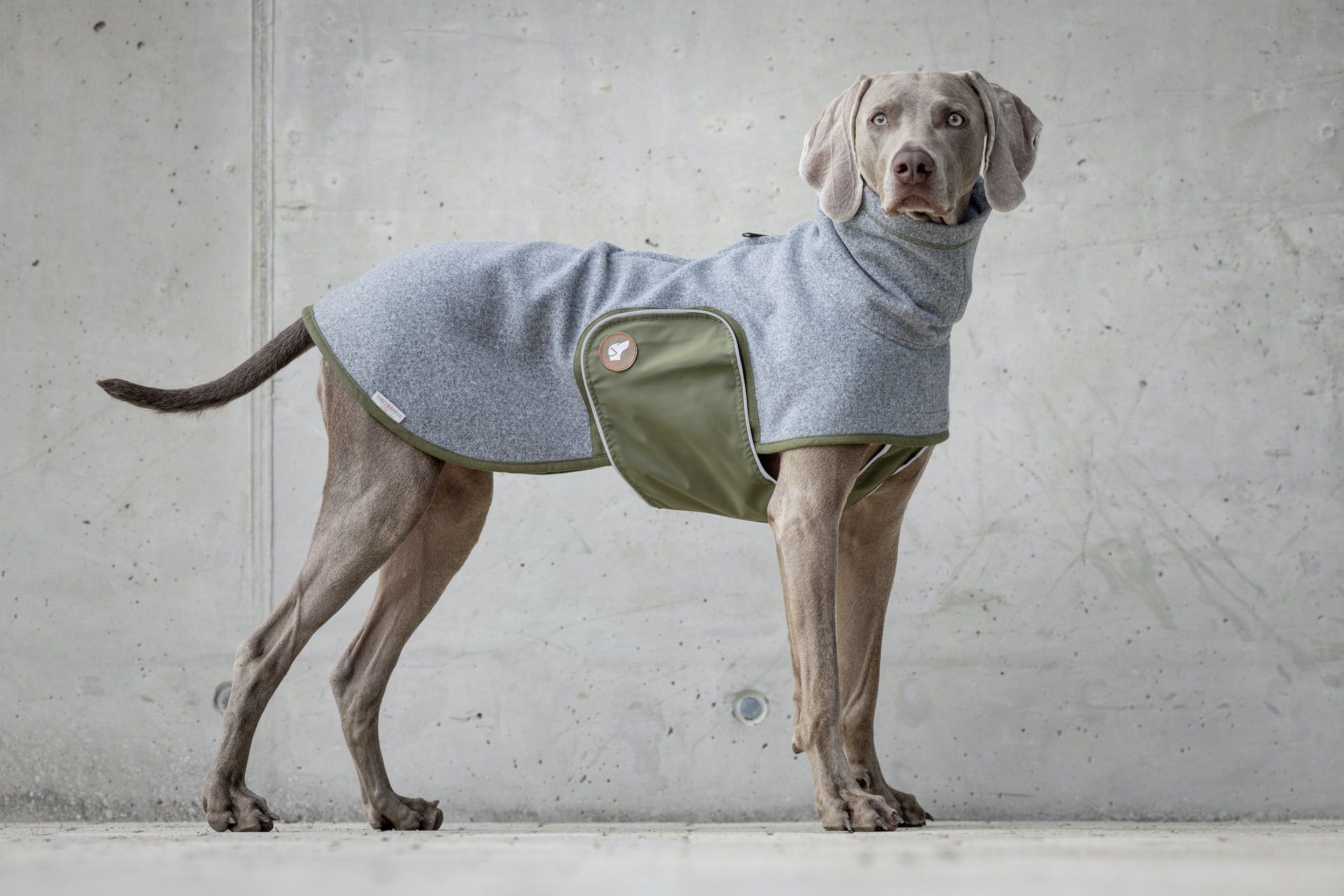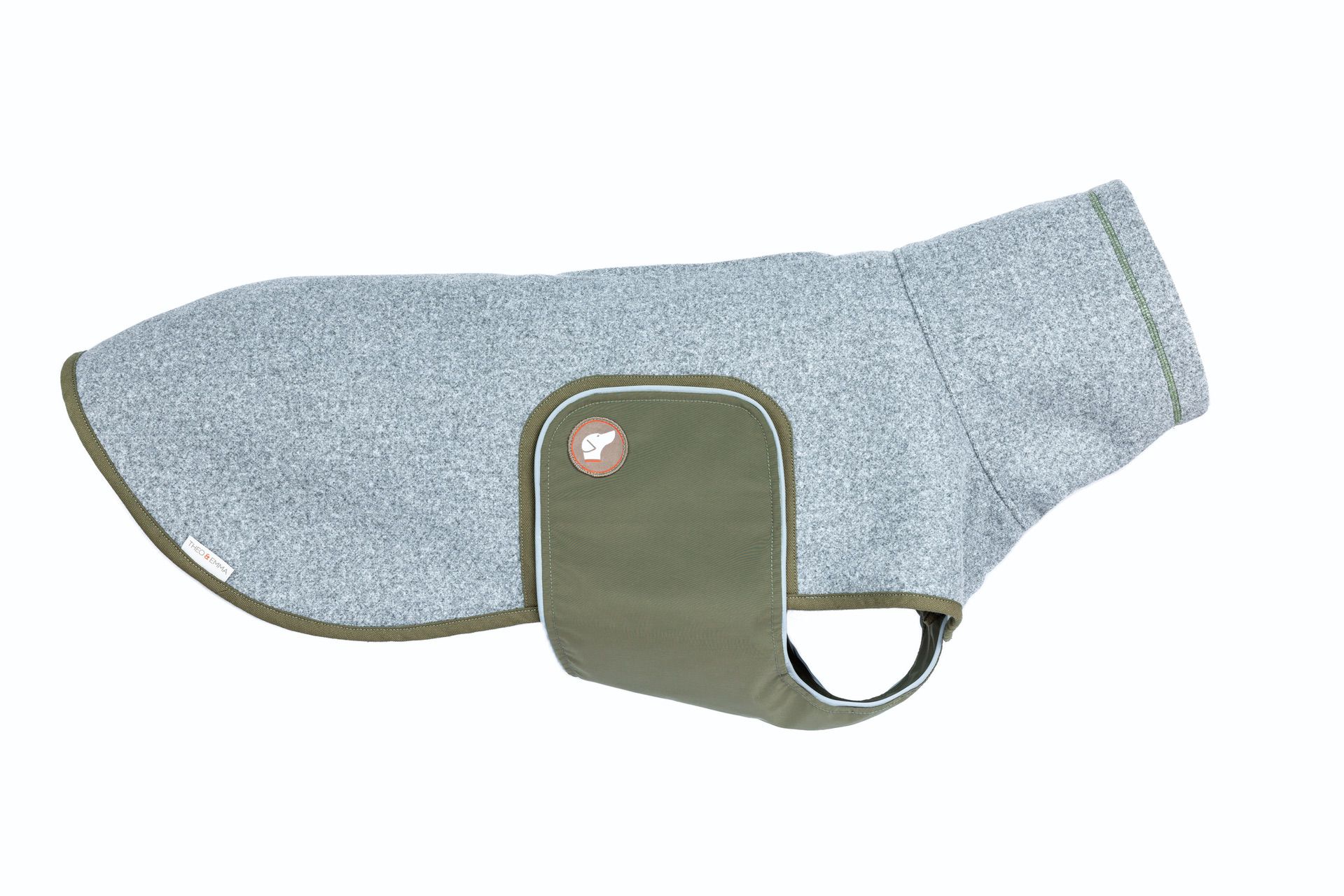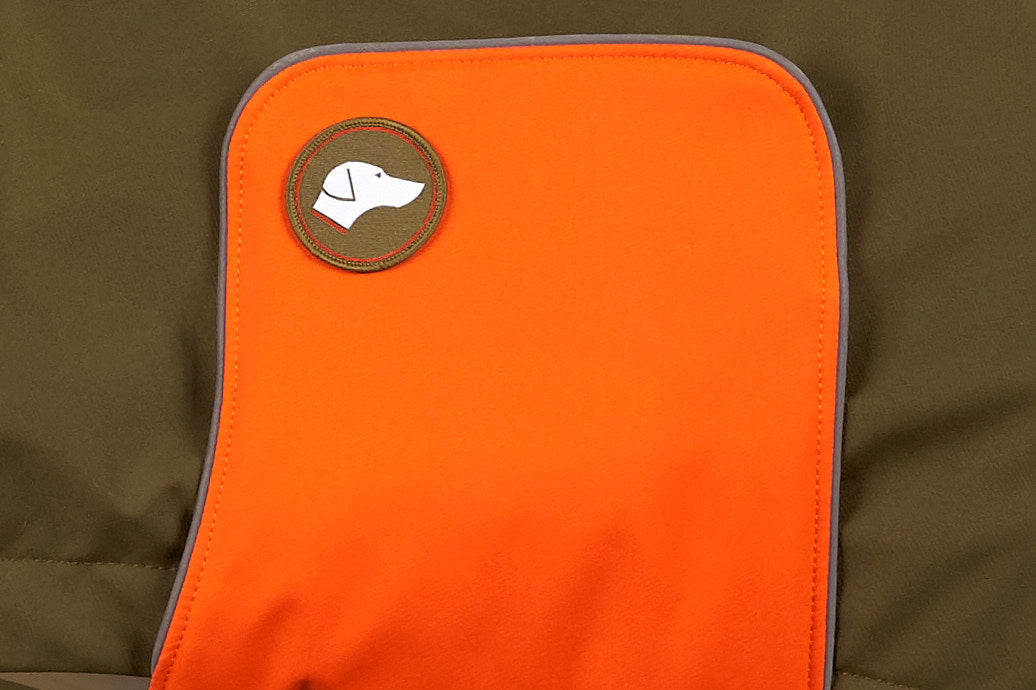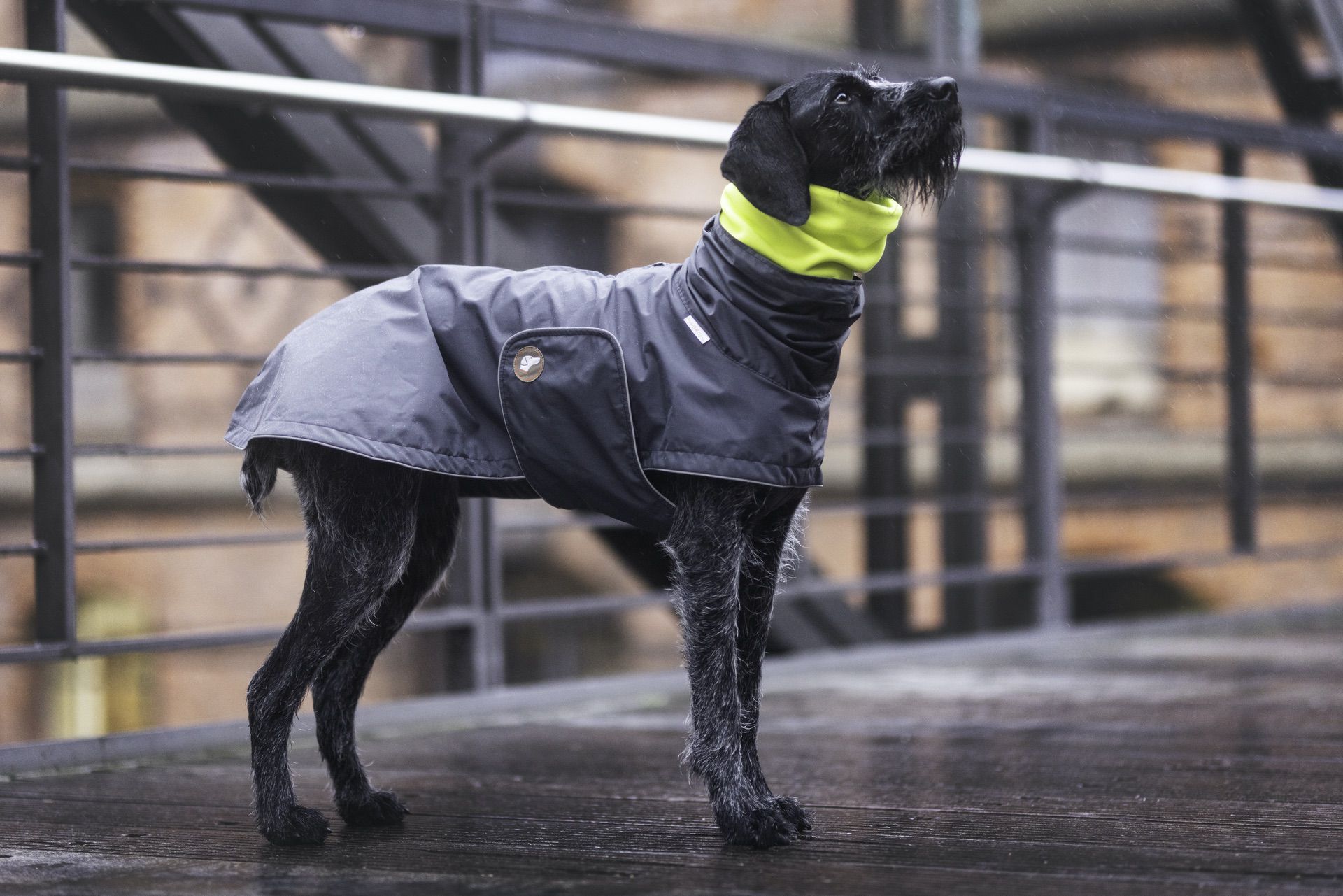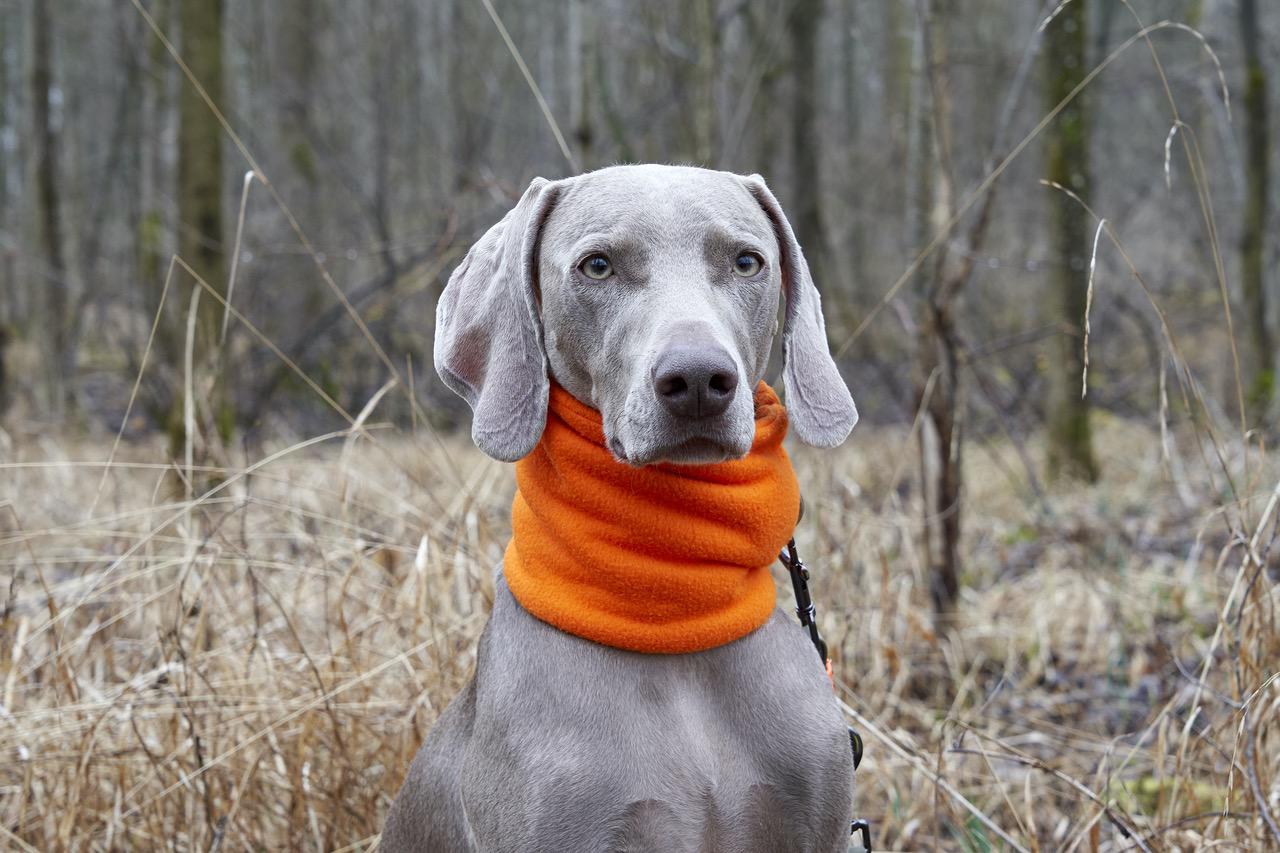Dog coats are much more than just a fashionable design accessory. Dogs without an undercoat can especially freeze in the cold. These breeds include the Hungarian Vizsla, Weimaraner, Dalmatian, Great Dane, Boxer, Doberman, Rhodesian Ridgeback, French Bulldog, as well as smooth-haired Dachshunds, Whippets, other sighthound breeds, and, of course, many mixed breeds.
Dog coats come in several different designs and for different purposes.
In its function, a dog coat compensates for the dog's heat loss, which would otherwise be prevented by an undercoat. This allows a dog to spend longer periods outside in cold seasons without freezing. The higher quality the fabric and the better the cut of a dog coat is adapted to the dog's anatomy, the better the coat's insulation function. The dog's body heat can be retained for longer.
Materials and fabrics for dog coats
The requirements for materials used in dog coats are high:
- Fabrics for dog coats must have a goodThermal insulationensure
- You mustflexibleanddurablein order not to restrict dogs' mobility
- ForRaincoatsthe materials used shouldwater-repellent, better still be waterproof
- Dog coatsshould be goodwashable, orwashablebe
For our dog sweaters, we therefore rely on warming fleece, and waterproof fabrics for our raincoats and winter coats. This ensures that our dog coat collection is optimally tailored to the needs of both dog and owner. They keep your dog dry and are ideal companions for excursions into the forest or the urban jungle, especially in autumn or spring.
The difference between dog coats, dog sweaters and dog raincoats
Raincoats for dogs should be at least water-repellent, and preferably even waterproof. The dog raincoat should not be too tight and should allow enough freedom of movement so that your dog doesn't feel restricted or hindered in his movements. The cut and fabric quality, especially for a raincoat, should be chosen so that the dog raincoat doesn't slip while moving, leaving part of your dog unprotected.
A dog sweater is perfect for the transitional seasons. When it gets colder outside, it will keep your dog warm. It's also a wonderful alternative to a coat on dry winter days. As an all-rounder, a dog sweater belongs in every travel bag during the winter months. When choosing a dog sweater, you should consider the following: In addition to a comfortable fit, a dog sweater should be long enough, especially around the chest and thighs, to keep the body warm. A well-cut dog sweater should also adequately cover your four-legged friend's rear end. And importantly, a dog sweater should be washable. Especially on cool, damp days in autumn or spring, our dogs can easily get dirty on walks. In this case, a sweater should ideally be machine washable at 30 degrees.
Winter coats for dogs
A winter coat for dogs is ideal for particularly cold days. When temperatures are around freezing or you're taking your dog on a winter walk, a winter coat is a must. A winter coat for dogs is primarily characterized by its lined and waterproof fabric. Your dog should not only be kept warm wherever it needs to be, but also dry. If it starts to snow while you're out and about, even the best insulation is useless if it gets wet. Just like a dog sweater, a winter coat for dogs should adequately cover your dog's chest, thighs, and rear end. It should also offer enough room for movement so your dog can run and play in the snow without interruption. The cut shouldn't be too tight. There should still be enough room for a flat hand between the coat and the dog when it's on. The last thing you should pay attention to is washability. Winter coats for dogs can also get dirty and should therefore be machine washable at 30 degrees.

